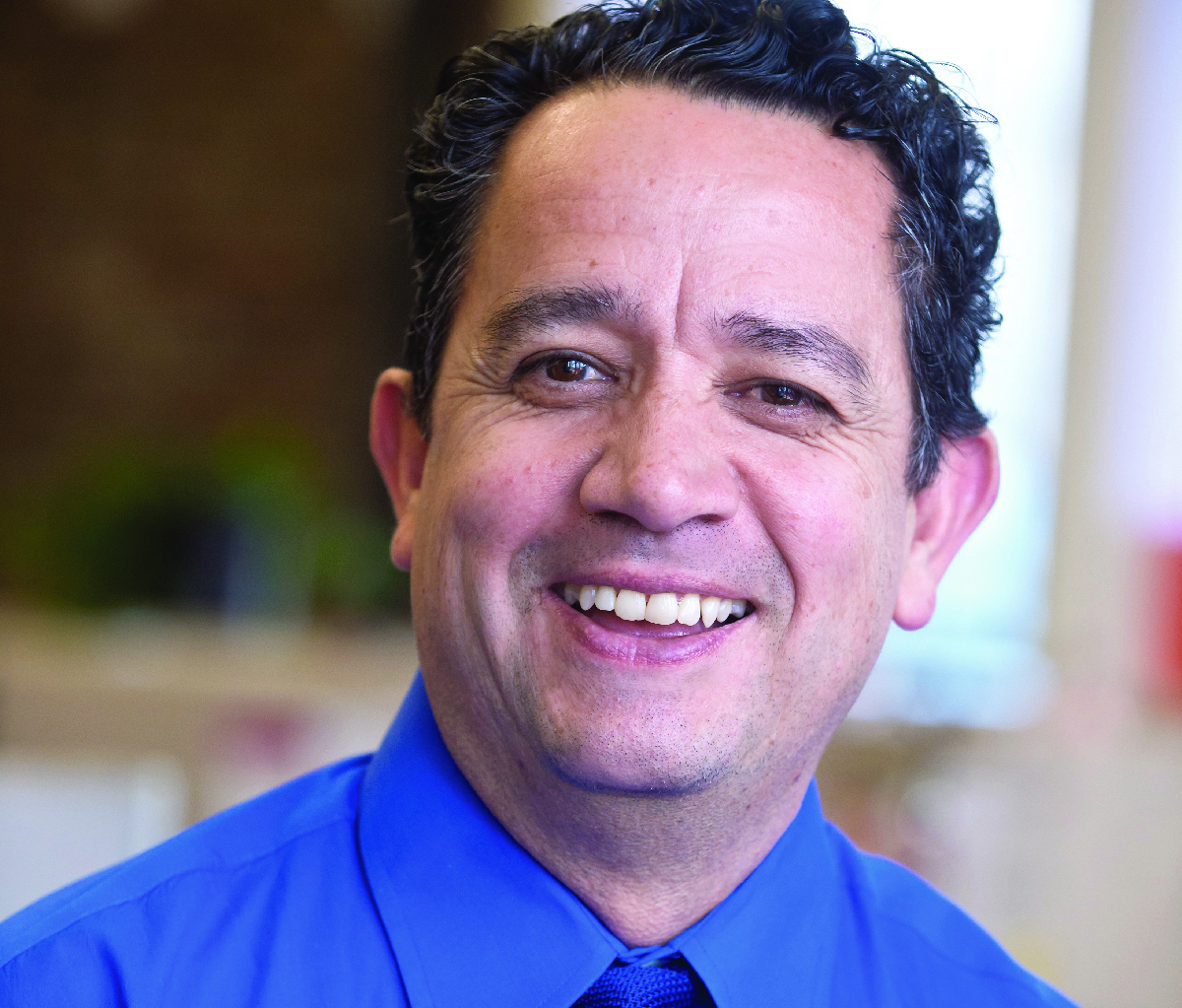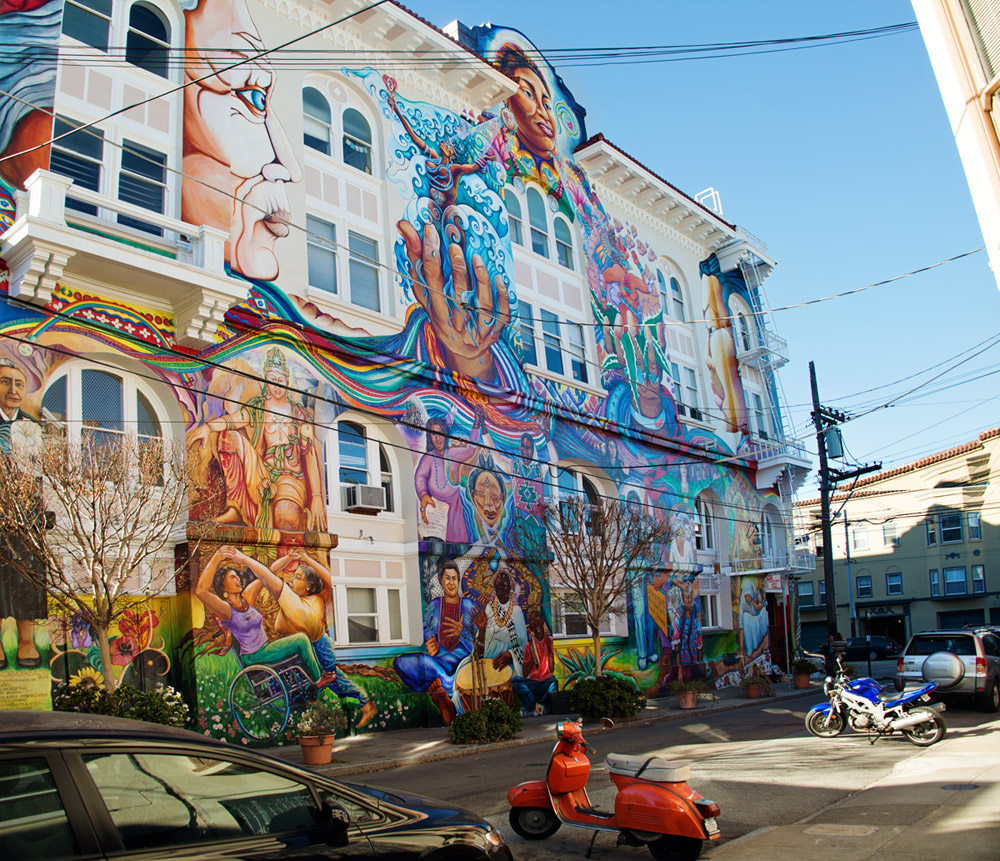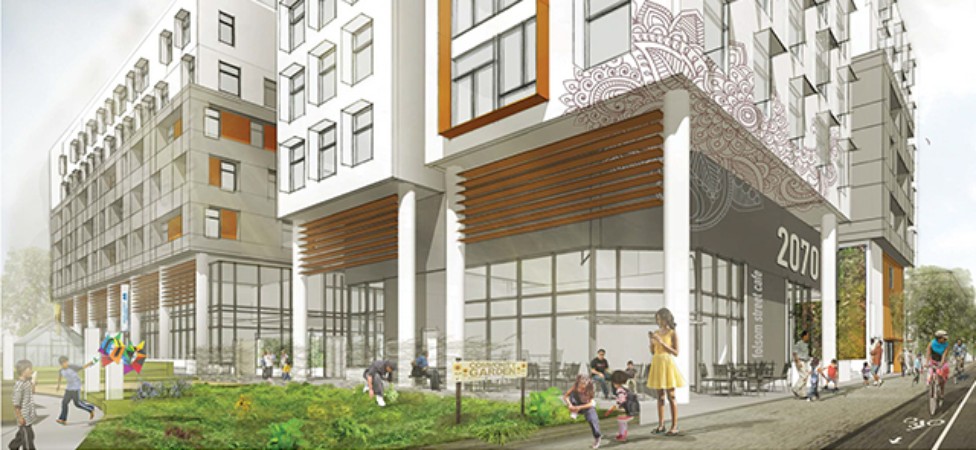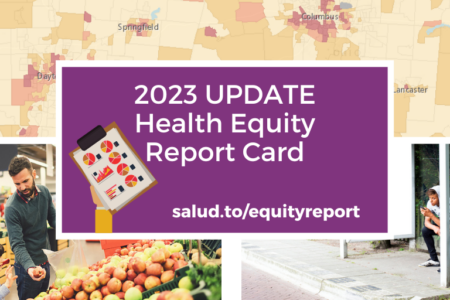Share On Social!
What happens when Latinos get “priced out” of the homes they’ve lived in for decades?

People like Luis Granados step up.
Granados, Christopher Gil, and other leaders of the nonprofit Mission Economic Development Agency (MEDA) didn’t stand by when a tech boom in San Francisco’s Mission District (30% Latino)—a hub for the city’s immigrant population—brought in higher-priced homes and threatened to push out lower-income families.
They embarked on a mission to create 100% affordable housing in the area.
The rising housing costs in San Francisco
Since 1973, the Mission Economic Development Agency (MEDA) offers free financial services to lower-income families in San Francisco’s Mission District, a traditionally Latino neighborhood where most rent their homes, said Christopher Gil, the group’s senior content marketing manager.

The technology boom in San Francisco (15.19% Latino) started to change the residential makeup of the local population.
In fact, Gil said, the Mission District has become an ideal spot for young high-end renters and homeowners in the tech industry due to its proximity to nearby two nearby freeways and a relatively short commute.
“The tech workers mainly work south of San Francisco in Silicon Valley, but they don’t want live there,” Gil explained. “Many are young, 20-year-olds who want to live in the kind of city that has opportunities for them, not in the suburban area of Silicon Valley.”
But this means that many long-time residents were being priced out of their homes due to the influx of young professionals.
“Over time, the property owners started catering to this market as there is more money to be made from these young professionals,” Gil said. “It’s not a case of blaming the property owners. It’s just the reality of the situation.”
In fact, in the last 10 years, over 8,000 Latinos have been displaced from the Mission District, said Gil, according to MEDA data.
“That’s a lot of people we’ve lost in this area; that’s a town if you think about it,” said Gil. “There are fewer people overall living in the Mission District now than there was in 2002. It’s the families that have been displaced and that’s why there’s been a housing crisis.”
Uncovering the problem
Clients of MEDA began to speak to them more and more about how housing was becoming an issue.
If a Mission District household does not make at least $70,000 a year, it’s almost impossible live there—a huge problem because the median income of MEDA’s clients is just $35,000, Gil said.
In an effort to keep their homes and remain in a neighborhood in which they have strong roots, many of the families began taking on extra jobs or adding boarders, and often neglecting health concerns in an effort to save money for housing.
This was stressing families and increasing health concerns, Gil said.
At that point, MEDA’s leadership knew they had to take action, so they began by taking the figurative pulse of the community.
“We did surveys of the neighborhood and we found that 85% of the people we surveyed spent over half of their income on housing,” Gil said. “Everyone is nervous about housing. Any economist will tell you that that number is not good. That number is way too high.”
Rent control wasn’t helping much, either.
The city of San Francisco is currently one that offers rent control, which is the government controlling and regulating the amount a landlord can charge for rent.
As the newer population moved into the neighborhood, the price of rent (and everything else—food, services, goods, etc.) in the area went up, in addition to more luxury housing with higher rents.
“So, in a neighborhood where 5 to 10 years ago the average rent was $1,000 a month, now the rents were $4,200,” Gil said.
Fear of losing one of the rent-controlled apartments—and then being subject to the rent demands of the newer housing market—was prevalent in the neighborhood.
“Even if someone is in a rent-controlled apartment, there is a constant, lingering kind of dread that is something happened, if they got sick or lost their job, they would lose their home,” Gil said. “There is also the very real possibility that someone new would come in and buy the building and they could lose their home that way.”
The Mission District hadn’t had a new affordable housing development since 2006.
The projected figures of affordable housing scheduled to be built in the neighborhood in the next five years is currently at 7%. This according to Gil, is just a drop in the bucket.
“The Mayor of San Francisco has come out and said that one-third of all new housing projects in the city should be affordable housing,” he said. “But this neighborhood will only get 7% and it has been the hardest hit, especially with evictions and everything that comes with it.”
MEDA leaders began to look for opportunities in which it might be able to acquire property for affordable housing.
Beginning an affordable housing project
MEDA formed a community real estate team, a group of interested and dedicated professionals that understood the industry and the area and its needs.
The team began to look for properties where MEDA could develop affordable housing. They zeroed in on an area in the Mission District that, much like the rest of the area, is under threat constant threat of rising rents and evictions.
Meanwhile, the city of San Francisco was looking to sponsor an affordable housing project that would be beneficial to the area’s residents, not simply another commercial site or upscale condominium project.
The city sought proposals for such a project.
MEDA officials wanted to submit a proposal for an affordable housing development at a city-owned parking lot at 2060 Folsom Street in the Mission District.
“This neighborhood has been ground zero for everything that has been going on in San Francisco: the evictions, the income disparities, the housing shortages,” Gil said. “It’s worse here in the Mission District. If we can fix it here, then it can become a model for other neighborhoods in the city.”
MEDA, however, had never developed a housing construction project before.
So they decided to team up with long-time affordable housing builder Chinatown Community Development Center for their planning for a potential affordable housing development project at the parking lot site.
Together they started creating a proposal to submit to the city for consideration.

The MEDA and Chinatown Community Development Center created a proposal that called for a 101-unit affordable housing facility at the parking lot site.
The new tenants of the building would pay only 30% of the rent of the area’s median income ($71,400). One-fifth of the 101 units would be one-bedroom studio units for young adults ages 18-24 who are transitioning out of state or foster care, and the remainder would be two- and three-bedroom apartments for families making below median income ($25,000-$60,000 a year).
But the site would be much more than just housing, Gil said.
About 11% of the project is commercial space for child and youth development center, resident leadership programs, and a café, which will involve community groups like PODER, Mission Neighborhood Centers, and Jamestown Community Center, as reported by the San Francisco Business Times.
The project also will connect a new city park, In Chan Kaajal.
“Our design gracefully maximizes density to create a development offering opportunities for community-building among a diverse mix of residents,” according to the project proposal, according to the San Francisco Business Times. “Our vision for this key site is guided and inspired by the many organizations working to preserve the Mission as a home for generations of families and youth.”
Keeping Latinos in the Mission District
In September 2015, the city selected MEDA and the Chinatown Community Development Center (CCDC) to develop a 101-unit affordable housing facility at the parking lot at 2070 Folsom Street.
“This is a good start, representing 101 of the minimum 2,400 units we need for our families,” MEDA Executive Director Luis Granados explained. “Our goal is to ensure that the 101 units will have preferences for Mission residents, especially those that have experienced eviction. This is a big win for the community.”
Karoleen Feng, MEDA’s director of community real estate, agreed.
“This is a huge deal, and we feel like it’s bringing our brand of affordable housing back into the Mission,” Feng said. “We’re really enlivening and enriching the neighborhood’s resources.”
New homes mean new opportunities
MEDA and the Chinatown Community Development Center immediately involved the community in the project.
The first in a series of community meetings was held in November 2015 to gauge neighborhood interest, share project details, and address any concerns residents might have.
“MEDA and all partners in this project are seeking community input,” Feng said. “The community is being asked to be part of the creation of the exciting final plan for his 100% affordable housing development which will be a great addition and fit in with the Mission neighborhood.”
Construction is scheduled to begin in the fall of 2017 on the new affordable housing project at the parking lot site.
MEDA and its partners have worked with an architecture firm in the area and the plan is for the building and the housing to be available in 2020.
“The building will not just have housing, but it will also house services and businesses that will benefit the new tenants,” said Gil. “There is also a new park right next door which is the anchor of the property.”
The 101-unit housing development is just the first step in a much larger goal of retaining low-income and Latino families in the neighborhood.
“People are really happy about this project,” Gil said. “MEDA has a good reputation in the city, so when leaders found out that we were the ones going to do the building it alleviated some fears. People are excited about the project and we want to make the community feel a part of it. Projects like this keep San Francisco, especially this neighborhood, inclusive, and that’s really what this city has always been about.”
MEDA isn’t stopping there, either.
They are teaming up with more than a half-dozen Latino-focused community groups—like Faith in Action, Instituto Familiar de la Raza, and Mission Neighborhood Health Center—to foster education and action around below-market-rate apartment options.
“We have a strong sense of urgency, and we have the ability to make it happen,” Luis Granados, MEDA’s leader, told the San Francisco Chronicle. “Being on a fixed low income should not mean you are displaced from the neighborhood you helped build over many decades.”
UPDATE: Financing for the MEDA development is in place for 127 affordable apartment rentals, with 29 units for formerly homeless transitional-age youth. Units will be available starting in 2020. The project was eventually named Casa Adelante.
Additional Links
http://medasf.org/
http://sfgov.org/
http://www.chinatowncdc.org/
Explore More:
HousingBy The Numbers
56.9
percent
of Latinos are "housing cost burdened"
This success story was produced by Salud America! with support from the Robert Wood Johnson Foundation.
The stories are intended for educational and informative purposes. References to specific policymakers, individuals, schools, policies, or companies have been included solely to advance these purposes and do not constitute an endorsement, sponsorship, or recommendation. Stories are based on and told by real community members and are the opinions and views of the individuals whose stories are told. Organization and activities described were not supported by Salud America! or the Robert Wood Johnson Foundation and do not necessarily represent the views of Salud America! or the Robert Wood Johnson Foundation.



